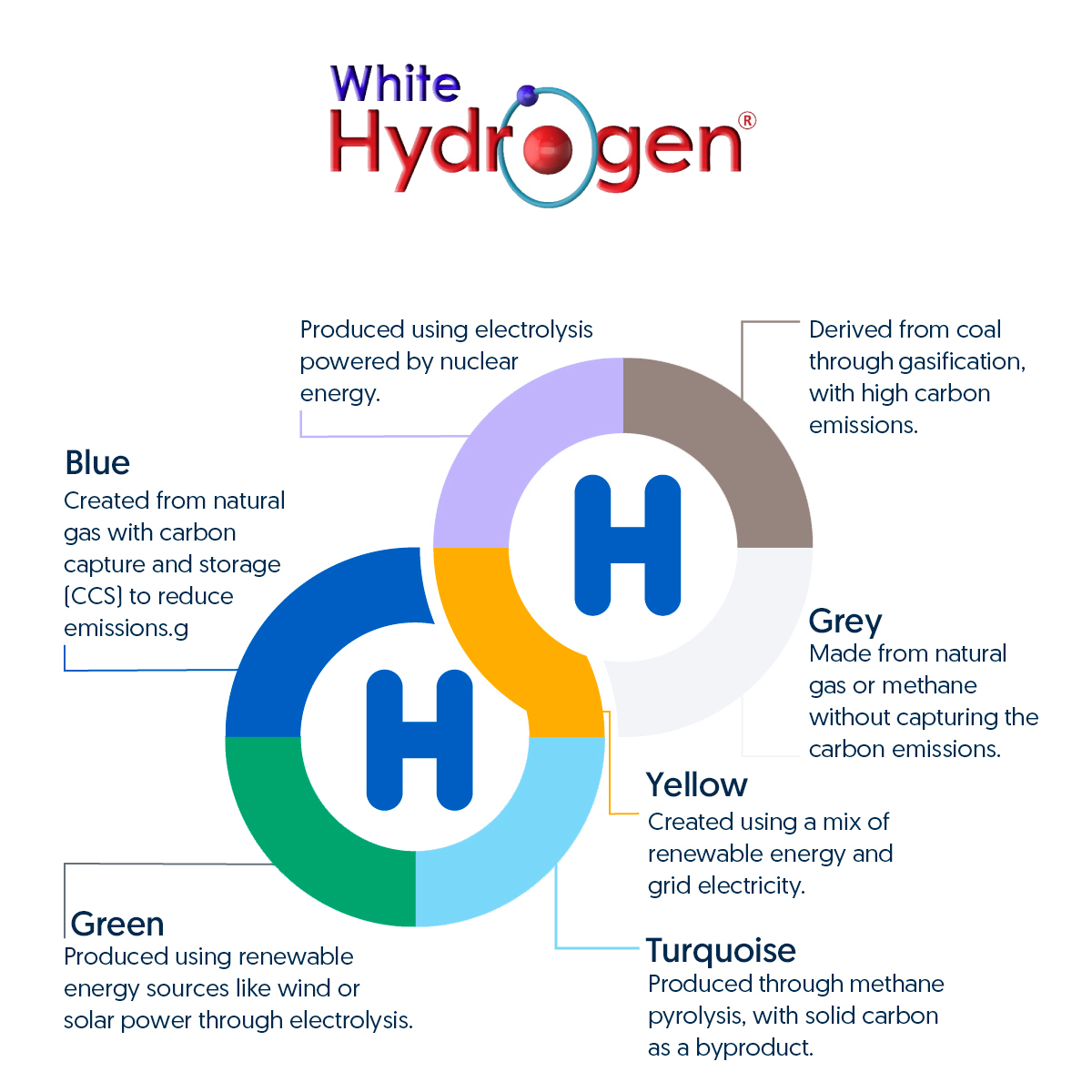Discover how White Hydrogen leads the way in sustainable, carbon-negative energy production.
The hydrogen industry uses colours to categorize production methods based on their environmental impact and energy sources. White Hydrogen, produced with H2-XERONOX® technology, stands out for its carbon-negative potential and use of waste feedstocks.
Most hydrogen today is produced from fossil fuels, contributing to significant CO₂ emissions. The colour of hydrogen indicates its environmental footprint, helping industries choose cleaner options for a net-zero future.
White Hydrogen offers a sustainable alternative by converting waste into clean energy with minimal emissions.

Produced with H2-XERONOX® converts biodiesel glycerol waste thermochemically, enabling a scalable, carbon-negative solution for decentralised, local energy and clean hydrogen production.
Generated through electrolysis powered by renewable energy (solar or wind). Clean but costly, requiring significant water and land resources.
Derived from coal gasification (black = bituminous, brown = lignite). Highly polluting with substantial CO₂ emissions.
Produced from natural gas via steam methane reforming (SMR) without carbon capture. Common but emits significant CO₂.
Similar to grey hydrogen but uses carbon capture and storage (CCS). Reduces emissions but still produces 10–20% CO₂ and requires CCS infrastructure.
Created through methane pyrolysis, producing solid carbon as a byproduct. Emerging technology with limited commercial application.
Generated via electrolysis powered by nuclear energy. Low-carbon but dependent on nuclear infrastructure.
Produced via electrolysis using a mixed energy grid, often including fossil fuels. Less sustainable due to variable carbon footprint.
White Hydrogen, powered by H2-XERONOX®, offers a scalable, carbon-negative solution for decarbonizing industries.
Converts agricultural and plastic waste into clean hydrogen.
Reduces emissions by avoiding landfill waste.
Eliminates the need for costly carbon storage systems.
Modular systems deployable in 20ft containers.
Explore how White Hydrogen can power a sustainable future.